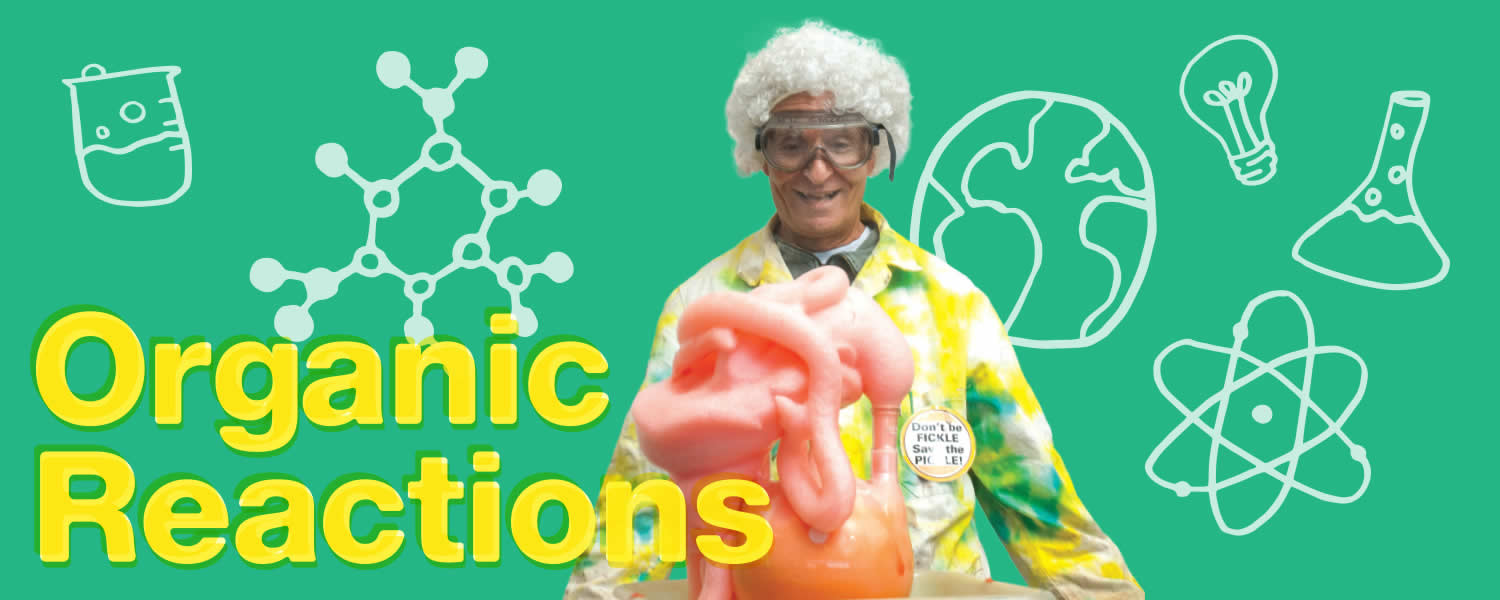Organic Reactions
Retired professor uses “elephant toothpaste” and nuked cukes to inspire youngsters.
Five electrified pickles and bulbs of colored luminescent solutions on a ring stand form a “chemis-tree,” the creative work of Steven Murov ’62, chemistry alumnus and professor emeritus of chemistry at Modesto Junior College (MJC) in California. The “nuked cukes,” featured in a 1994 issue of the Journal of Chemical Education (vol. 71), are a big hit with chemists. But Murov has a broader vision.
Youngsters get turned off from science around middle school. So it’s very important that we do everything we can to show them that science is fun, important and that anybody can do it.
– Steven Murov ’62
The Fickle Pickle experiment is one Murov has used over the years to help ignite youngsters’ passion for science. He began performing chemistry shows early in his teaching career while at Sangamon State University (now University of Illinois at Springfield), initially as a community service project. He enjoyed the shows so much that an alter ego—Dr. Al Chemist—was created (thanks to his wife), and he has been performing demonstrations for community groups ever since.
Five teaching positions, two lab textbooks (in their sixth and seventh editions), an online lab book and more than 1,000 chemistry shows later, Murov is retired but continues to work with the science division at MJC. He still performs shows and is active as a committee member of the Modesto Area Partners in Science (MAPS), a group that he helped found in 1990 out of a concern for students who enter college unprepared for science. At the time, he and a colleague wrote a proposal and received federal funding for science education training for local teachers, a monthly Friday night science series and programs for fifth graders. This age group, says Murov, is particularly important.
“Youngsters get turned off from science around middle school. So it’s very important that we do everything we can to show them that science is fun, important and that anybody can do it.”
Although he doesn’t consider himself an extrovert, Murov lives for the audience reactions to his action-packed, interactive performances filled with teachable moments. When he asks his young audience if he should put his hands into liquid nitrogen, he’ll get a resounding “yes!” The possibility that frozen hands might shatter upon hitting a tabletop elicits quite the excitement, says Murov with a chuckle, but the kids often still want him to do it. After explaining that his hand really could be severely damaged, he instead dribbles a little liquid nitrogen on the back of his hand—a safe demonstration.
Kid-approved demos also include “elephant toothpaste” (a combination of 30 percent hydrogen peroxide, dishwashing liquid, food coloring and a 2M potassium iodide catalyst) and a large water vapor cloud made by a liquid nitrogen fountain. Murov’s performances are often part of a three-part show that includes other scientists—both male and female—from different disciplines. Diversity is important, says Murov, because it helps students envision themselves as scientists.
The Friday evening MAPS science shows, open to all ages, still attract capacity crowds and have featured diverse experts, including paleontologist Jack Horner, consultant for Jurassic Park, and Harvey Mudd’s resident Mathemagician Art Benjamin. Programs focus on the science that everybody should know, says Murov, from health issues to water issues to climate change. One on vaccines might be a good idea right now, he says. “For reasons I do not understand, some people do not accept scientific evidence, and as a result, we are now in trouble. It’s a challenge speaking to the people who don’t accept the evidence.”
But Murov—Dr. Al Chemist, if you prefer—intends to keep entertaining and educating community members, especially those fifth graders. “The biggest thrill of all is just watching their expressions as you’re doing the demos, because they really love it. You can just see it in their faces.”
He hopes that light goes on and stays on.
